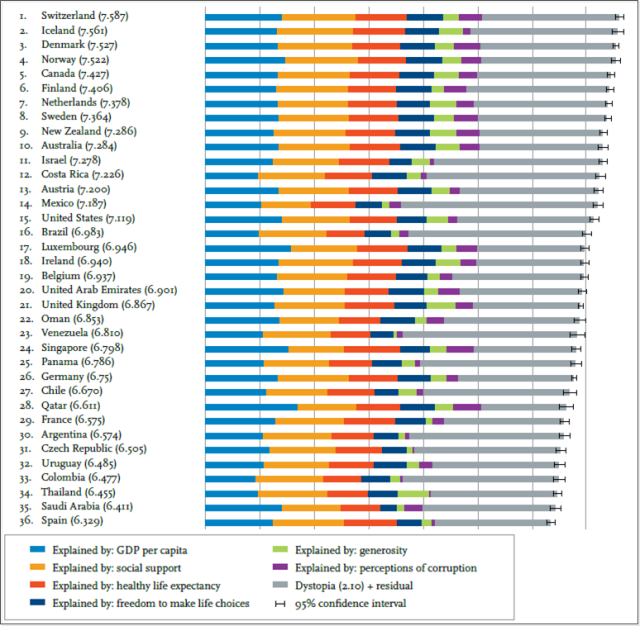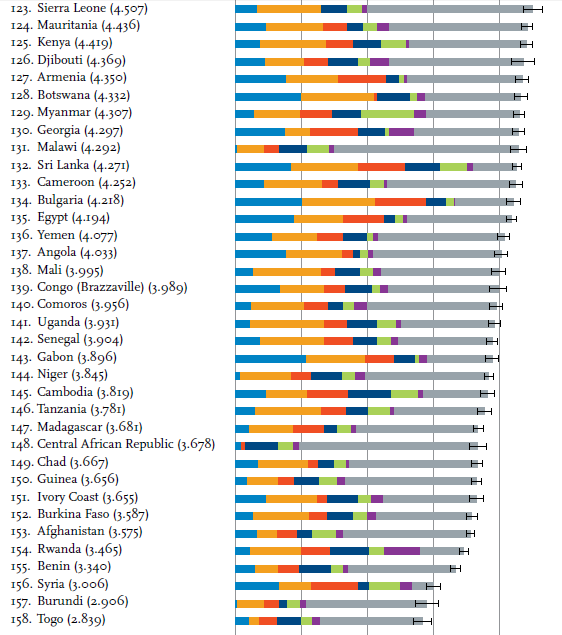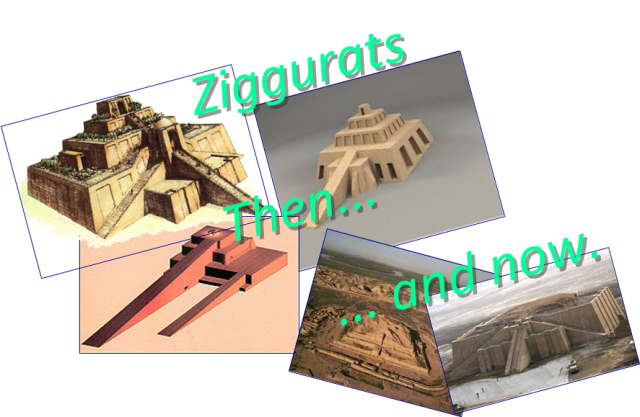There’s Hope for This Fragmented, Fractured, Fractious World
Posted on 2015 June 22 by Mark MacyNews Roundup (1), June 2015
News stories from the first half of this year reinforce what many of us already suspect… that…- World society is broken up into small, incompatible pieces (fragmented),
- The world is just plain broken (fractured) in several places, including its climate and its politics, and
- Human nature, like the Earth itself, is largely wild… unruly… savage (fractious)…
… but amid all that gloom there are also many glimmers of hope.
(Editor’s note: This news summary has grown larger than anticipated, so I plan to divide it into three installments. The first installment, below, is on how the world is fragmented. The other installments in the coming days will be about how the world is fractured and fractious.)
ҒrágmЄИted Я ЏS
We humans like to take a romantic view of our many cultural, racial and religious differences… thinking of humanity as a rich treasure of languages, beliefs, attitudes, and political systems.But the simple truth is, differences lead to incompatibilities, and incompatibilities lead to misunderstandings, mistrust, and conflict.
So, while differences among us humans are inevitable, we should probably spend less time celebrating them and more time and effort trying to keep them compatible… harmonious… resonant.
.
Disparate Happiness
This map from the 2015 World Happiness Report shows how contented we humans are across the world.
Of the 10 happiest countries, half are in northern Europe. At #15, the USA just barely made it into the dark green class this year. Brazil, #16, starts the next lighter shade of green, as the list below explains.

Six factors were used in the study to gauge happiness:
- GDP per capita,
- social support (as measured by having someone to count on in times of trouble),
- healthy years of life expectancy,
- perceived freedom to make life decisions,
- generosity (as measured by recent donations, adjusted for differences in income), and
- trust (as measured by a perceived absence of corruption in government and business).
The gray bar at the right refers to a hypothetical country called Dystopia, a really dismal place that would be at the bottom of the list (below) in all categories for the previous three years (2012-14).
Below are the world’s unhappiest countries this year, where suffering, poverty, injustice, corruption, and violence play a bigger role in the lives of the people:

(View or download the entire World Happiness Report here…. )
There’s just one aspect of this study that makes me a little uncomfortable. All in all, it’s a good, comprehensive study that shows what still needs to be done to make the world a happier place. The only thing that makes me uncomfortable is that it feels like it’s built mostly around the “western” model, especially stressing “freedom” while downplaying fairness and equality… stressing “GDP per capita” without ensuring that the fruits of GDP (wealth) are spread at least with a modicum of fairness. I’ve long held that a really happy country is one that strikes a balance between individuals’ rights to be free and societies’ rights to be stable… social stability being sustained mostly by a strong government that assures fairness and equality for everyone. This study alludes to “generosity” and “social support,” which are something close to the notion of fairness and equality… but they don’t refer to a strong government to provide that generosity and social support. The study almost implies that these things should come from friends and social groups that evolve within society… whereas I think, given the noble-savage nature of human beings, they can only be reliably maintained by a strong government. But this concern for fairness could be just my own personal bias… and I don’t want to come off sounding like a scavenger nipping at the heels of the noble steed that this study is… as some critics tend to do.
The study shows clearly that national dispositions around the world range from delight to desolation.
The next part is up to humanity. It would be in the best interest of posterity if we, today, could enact solutions to raise every nation to a state of happiness.
By that, I mean lasting solutions… not superficial gestures that provide only short-term relief.
By “superficial” I mean…
- Those terrible ads that showcase starving, emaciated kids while the advertisers beg for your money, with the implication that giving the advertisers money will help those starving kids (right),
- Convoys of grain hauled to refugee camps at the height of a famine, and
- Military troops deployed by rich countries to try to maintain order under desperate conditions of famine, plague, and genocide.
These are just superficial solutions that provide fleeting relief at best. Like a topical ointment on a sore that’s festering badly below the skin.
We need to stop the deep-rooted geo-economic infections that are ravaging much of the world (the reddish areas in the above map).
Today there’s one gadget in the global toolbox that’s been specially designed for that purpose: The Vitality Ratio… a running correlation between a country’s resources and needs.
It’s my belief that if a society’s material and energy needs can be kept in line with its resources (through population control and other means)… if there are enough resources to go around and not too many mouths to feed… then and only under those conditions is it possible to have true and lasting contentment here on Earth.
The other factors of happiness will always be out of reach if a society’s needs exceed its resources. Social support, freedom, equality, generosity, and tolerance can be achieved and maintained only after everyone’s basic needs have been satisfied.
And by “basic needs” I’m referring not just to food, clothing, and shelter, but also the basic services of modern society: infrastructures for clean water, transportation, communication, waste disposal, and so on. The Vitality Ratio provides a fertile base from which to establish and sustain those basics.
It’s when needs begin to exceed resource availability… when there are too many mouths to feed… when competition for dwindling resources becomes brutal… it’s then that the savage side of human nature rears its head and eventually goes berserk, spinning off into genocide and war… and contentment slips way out of reach.
One main purpose of the Vitality Ratio is to preserve human contentment by preventing scarcities that lead to brutality.
.
7,000 Languages
Among the ancient ruins of the world are the larger-than-life ziggurats, which, back in the day, looked like massive temples / cathedrals / pyramids / skyscrapers. Some ziggurats were taller and bulkier and more elaborate than even the Great Pyramid at Giza.
Artist renderings of some of ancient Sumerian ziggurats, compared with their modern-day ruins (one of which, lower right, was partially restored, compliments of the late Saddam Hussein).
(Read more about the ziggurats… )
Modern scholars can only speculate about the exact purpose of the ziggurats, but many think that the largest one, built in Babylon and named E-temen-an-ki (meaning “house of the foundation of heaven on earth”), may have been the legendary Tower of Babel. The Etemenanki ziggurat was associated with the Temple of Marduk, the Babylonian god that shared a name with the late, great planet Marduk, or Eden, where our earliest human ancestors came from (… despite what you’ve read in all the history and anthropology books…).

Artist renderings of Etemenanki, the largest of the ziggurats… and maybe the legendary Tower of Babel?
The Tower of Babel, as described in the Bible, was built in Babylon after the flood (which would mean after the fall of Atlantis, at the start of the Second Epoch), and its purpose apparently was to provide a single bridge or connection point between the carnal world on Earth and the worlds of spirit. The ancient texts suggest that the intent with Babel was to have everyone on Earth speaking a common language.
But something went wrong. Somehow, possibly through the intercession of misguided titans who had meetings at the Tower that they’d built (superhumans who interacted closely with the Earth at the time), the original intent of one unifying world language fragmented into many different languages spread among human societies around the world… all stemming from the Tower of Babel.
(I suspect that’s close to what really transpired in Babylon, and in Atlantis before it… the fragmentation of mankind provoked by misguided Titans, whose assigned task it was to bring order, not chaos, to the planet. Hence the proverbial “fall of man.”)
The Tower, then, laid a groundwork of misunderstanding and mistrust within humanity that has lasted to present times. Today there are some 7,000 different languages spoken on Earth.
In recent centuries there have been efforts to gather humanity back together under an umbrella of a single global language… or at least to provide an international auxiliary language…
- The Volapük language, developed by a Bavarian priest in 1880, never caught on because of its Latin-ish complexity (and maybe because of its unfortunate name?)…
- Esperanto was developed by a Polish doctor a few years later as a simpler, more elegant, better-christened, and much more promising world language, and it attracted millions of adherents…
- Ido appeared in 1907 as an attempt to correct some inherent flaws in Esperanto…
- Interlingua was developed in the 1930s with a focus on word similarities among European languages.
… but then, suddenly, out of nowhere… the world was transformed by the high-tech, Internet age, and the English language happened to be at the right place at the right time. English today is spoken by some 2 billion people and is the closest thing we’ve ever had to a planetary language.
That’s a lucky come-about for native English-speakers like me, but a misfortune for the rest of the world, when you consider the many absurdities of the English language.
- Got – bought – taught – watt – yacht… really?
- Bough – cough – dough – hiccough – thorough – through – tough … really?
Or, as illustrated by this poem by Margo Roark, worthy of a pull-it surprise…
- Eye halve a spelling checker.
- It came with my pea sea.
- It plainly marques for my revue
- Miss steaks eye kin knot sea.
- Eye strike a key and type a word
- And weight four it to say
- Weather eye am wrong oar write
- It shows me strait a weigh.
- As soon as a mist ache is maid
- It nose bee for two long
- And eye can put the error rite
- It’s rare lea ever wrong.
- Eye have run this poem threw it
- Eye am shore your pleased two no
- It’s letter perfect awl the weigh
- My checker tolled me sew.
With any luck, a good, simple world language will arise over the next century as the globalization revolution continues.
(Read a fun, fascinating article about the evolution and likely future of world languages… )
.
Why Religions Split Apart Into Contentious Sects
Religions down through the ages divide naturally into various sects and denominations that appeal to different types of people with different dispositions.- The most orthodox and conservative religious sects prescribe clear-cut morality and insist that their belief system is the only truth. (Read more… ) There are certain types of people who feel stable and secure as part of a tenacious, final-word social group. They are typically organized, conscientious, dutiful, high-achieving, dependable, and strategical. They don’t like being faced with a lot of new information that can dilute or undermine those good, stable qualities. Those people often feel at home as part of an orthodox / conservative religion.
- The most liberal and contemporary religions advocate tolerance for other beliefs and personal responsibility in making moral choices, while downplaying the need for autocratic worldviews and moral codes. (Read more… ) Certain types of people are more comfortable when they can process new information and reconcile it with their own worldview, while giving strangers the benefit of the doubt. They are open to new experiences, curious, creative, and prefer novelty and variety. Those people often resonate with liberal religions.
That might sound like a bunch of speculation on my part, but there’s good evidence to back it up. (Read more… )
The “Big Five” personality traits have become a cornerstone of modern psychology over the past 30 years. It seems that nearly all aspects of everyone’s unique dispositions can be boiled down to fit into these five traits (the first two of which I used to form the above premises about conservative and liberal religious sects):
- Openness describes a person’s degree of intellectual curiosity, creativity, and preference for novelty and variety… an openness to experience new things. This quality has been found to be prevalent among political liberals.
- Conscientiousness is a tendency to show self-discipline, act dutifully, and aim for achievement, and provides a basis for planning, organization, and dependability. This quality has been found to be prevalent among political conservatives.
- Extraversion describes energy, positive emotions, assertiveness, sociability, talkativeness, and the tendency to seek stimulation in the company of others.
- Agreeableness is the tendency to be compassionate and cooperative towards others rather than suspicious and antagonistic.
- Neuroticism describes vulnerability to unpleasant emotions like anger, anxiety, depression, or vulnerability. Neuroticism also refers to an individual’s level of emotional stability and impulse control and is sometimes referred to as emotional stability.
(Read more about the Big Five… )
If you’re interested, you can take a test here to see where you fit into the Big Five personality model. It might give you a little insight into why your religious or political views lean a little to the left or to the right.
Meanwhile, this insight into the nature of liberal and conservative religions can give us clearer perspective on many of the religious crises that have been coming to light this year:
The Catholic faith is losing members fastest of all. (Read more… )
Hypersensitive religions, like hypersensitive people, continue to have their sensitivities tested by cruel forces in this noble-savage world… case in point, the massacre in the Charlie Hedbo office in Paris by religious militants who were offended by the vulgar, anti-religious humor published in the Charlie Hebdo satirical weekly newspaper. (Read more… )
Sunni and Shia Muslim sects in the Middle East are becoming ever more polarized and contentious this year, stirred up by militant start-up groups like ISIS. (Read more… )
If you wish to explore the fragmentation of modern Christianity from the heartfelt experiences of many bright Christian thinkers, there’s an interesting set of pages hidden away in a Texas bass-fishing website, of all places. (Simply click here to open that Christian subsite, then select some of the articles listed on the left, many of which speak openly and directly about Christian sectarianism.)
.
The next installment of this news roundup will look at ways of healing a fractured (broken) world, and I’ll probably post it within the next week. I’m pleased to say I have more time lately to work on this site (and on its macyafterlife alter-ego site), since I retired from my technical writing contract work a few weeks ago.
Share this:
Thanks to: http://noblesavageworld.com






 Sat Mar 23, 2024 11:33 pm by globalturbo
Sat Mar 23, 2024 11:33 pm by globalturbo

